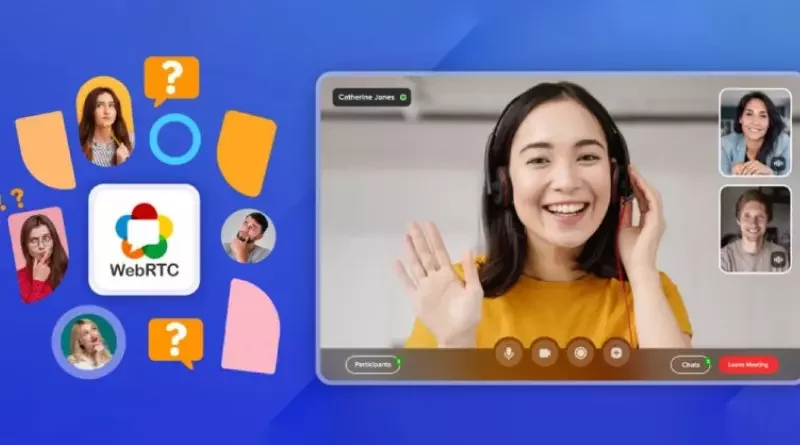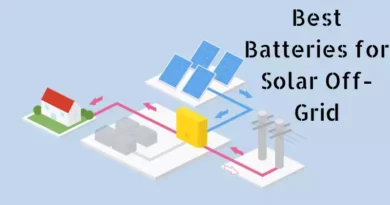WebRTC Video Call Encryption and Security Guidelines!
The built-in encryption of WebRTC makes it possible to preserve the privacy of users, but the question that still has to be answered is: whose privacy are you attempting to protect, and how?
In the past, inventions were first produced by firms, and only then were they made available to customers. The general public may now get their hands on newly released WebRTC video call features before they are integrated into corporate applications.
Privacy: The consumer version
Exactly what steps do you take to ensure your anonymity online? Whether or if the information is tied to sensors (think GPS or heart rate). Your conversations with other users are secure and cannot be eavesdropped on in any way. This also applies to the pictures you take.
To put it simply, you want to lock down your data so that no one else can see it except you and the individuals you’ve authorized to see it. Those services you use to generate and transfer the data in question are also included.
Do you use social media, like Whatsapp, to communicate with others? If you’re worried about somebody sniffing your network and reading your messages, encrypting your conversations is a must. In addition, you do not want the Whatsapp team to view your messages.
The term “end-to-end encryption,” or “E2EE,” describes what you’re really looking for. Because of this, not even the service provider facilitating the communication session can see what is being spoken between you and the other party. The supplier of the communication service is included in this. Because it is encrypted with a session-specific key known only to the people taking part in the session.
The enterprise version of the privacy
A customer’s daily routine is simple. Certainly in contrast to a real company. You need privacy safeguards inside the organization, but you also need strong leadership and a repository of institutional knowledge.
When a gathering is planned to occur. Those currently present at the conference should be the only ones allowed in, right? Take into account what this means. Should only those working in that department be allowed to see it?
Modern customer relationship management (CRM) platforms may be integrated with an organization’s email server to collect all correspondence with a certain client. In this way, we can be confident that we’re always receiving the most recent information from the client.
Potential compliance difficulties may necessitate the recording and storage of some communications. Or maybe we just need to transcribe them so that we can subsequently query our company’s knowledge base.
Many gaps exist between how organizations and consumers understand privacy. It’s better structured and more granular, with separate rules and permissions for each tier.
WebRTC and privacy
WebRTC API is only a foundation; you’ll need to figure out how to put it all together on your own. This means you run the risk of screwing it up at either the planning or implementation stages.
Privacy as part of the service you get is something you’ve specifically requested. What makes WebRTC’s emphasis on privacy so crucial, though? WebRTC has security built-in, so you can use it to provide services that are both private and useful to your customers.
Let’s break down what we mean when we say “Webrtc privacy”:
- WebRTC mandatory encryption (and security)
WebRTC ensures the security of all transmitted material via the use of encryption. Media transmission “in the clear” is not an option. Encryption of the actual signaling is likewise highly suggested and, in all practicality, already occurs. To conclude, this leads us to our third and last point. Nobody “over the line” can record or alter the bitstream even if they see it in real-time.
Keep in mind that at this point, the contact is terminated by a media server, which has knowledge of the communication’s contents and access to its encipherment keys. The TURN servers are not privy to such details. This cryptographic approach is never contested since it is always put to use.
- E2EE in WebRTC
End-to-end encryption (E2EE) will be required if the use case is extended to incorporate group discussions. A technique known as insertable streams built on top of the Webrtc protocol might be utilized for this purpose. This causes the data to be encrypted twice, once between the sender and the media server and once again between the sender and the recipient.
Additionally, there is a barrier between the sender and the receivers. This supplemental encryption is built right into the application and adds an extra degree of safety. Although WebRTC facilitates its deployment, it does not require or encourage its use.
- Deniability vs governance of communications in WebRTC
As a result of WebRTC’s flexibility, it’s feasible to use it to solve a problem with two different solutions, which might make implementation more challenging.
- Using WebRTC, you may create a plausible deniability scenario.
In order to facilitate communication between users, Webrtc peer-to-peer includes a decentralized data channel. You may transmit secret, encrypted messages from one user on that network to another user on that network without a simple method to track the communications, much alone the metadata of the message if you utilize signaling servers to open up such connections in order to build a loose mesh network of peers. WebRTC, which functions like TOR and BitTorrent, is capable of many more advanced tasks than that, although it is still limited.
With the same method, you may facilitate private, one-on-one conversations between users or between members of small groups of users, with the users’ material passing only between them. Alternatively, you could use E2EE on media servers to encrypt the transmissions so that they remain private regardless of the underlying network.
- WebRTC might be utilized for administrative purposes
Instead, you may use WebRTC to force all connections via your media servers and prohibit them from going anywhere else. Media servers may impose policies, store media, and provide governance. In certain fields and markets, this is an absolute need. This knowledge is gained with the ability to keep your online communications private.
Really, who cares?
This is the primary worry when it comes to privacy. I don’t see why anybody cares. There was no one else around at the same time and there was no one else there. When asked directly whether they value privacy, most people will respond affirmatively.
There are a lot of people that take advantage of it. Whatsapp first implemented E2EE in 2016, when it already had one billion monthly active users. It started offering E2EE backups in 2021. It seems that people wanted it, but not enough to move to a safer and more discreet texting method.
Can we draw the conclusion that privacy is unnecessary in this case? No. Should we, therefore, stop worrying about keeping our personal information to ourselves? No. This just shows that other facets of people’s lives are as, if not more, important to them.
Cloud Platform as a Service (CPaaS), Video API, and Data Privacy
It would seem that video APIs and other cloud-based content creation and distribution systems have serious security flaws, especially with regard to user privacy.
E2EE is widely supported by today’s messaging platforms. UCaaS providers have recently begun incorporating E2EE into their video calls and chat features. Some businesses are starting to provide Key Management System (KMS) integration, which implies they aren’t handling encryption keys internally.
The telephonic network is crucial to CCaaS, but it begs the question: how much privacy can customers anticipate? Conversations are also often recorded for “quality and training purposes,” which translates to the usage of machine learning and the provision of governance.
Video CPaaS is now in the middle ground between the two extremes, with Webrtc communication built-in encryption making it possible for sessions to be encrypted.
Yet, the firm that creates the video call API may have direct access to everything that goes via the media server. Only a few businesses have really integrated E2EE features into their product.
In what ways may it be explained? Providing E2EE is difficult in and of itself, but providing it in a generalized, flexible manner that can be used in a wide range of situations is much more so. Furthermore, customers do not always care about it, and they are not always prepared to pay for it; but, they are likely to be eager to pay for services like the recording.
Conclusion
There is a lot of discussion about privacy, but not much action taken to enhance it. The beginning of the E2EE era has arrived in the world of consumer goods. The business world is working toward a similar objective but at a more leisurely pace.
At the same time advances such as machine learning and cloud-based media processing are tilting the balance back toward less privacy, at least from the position of the firm hosting the service.



